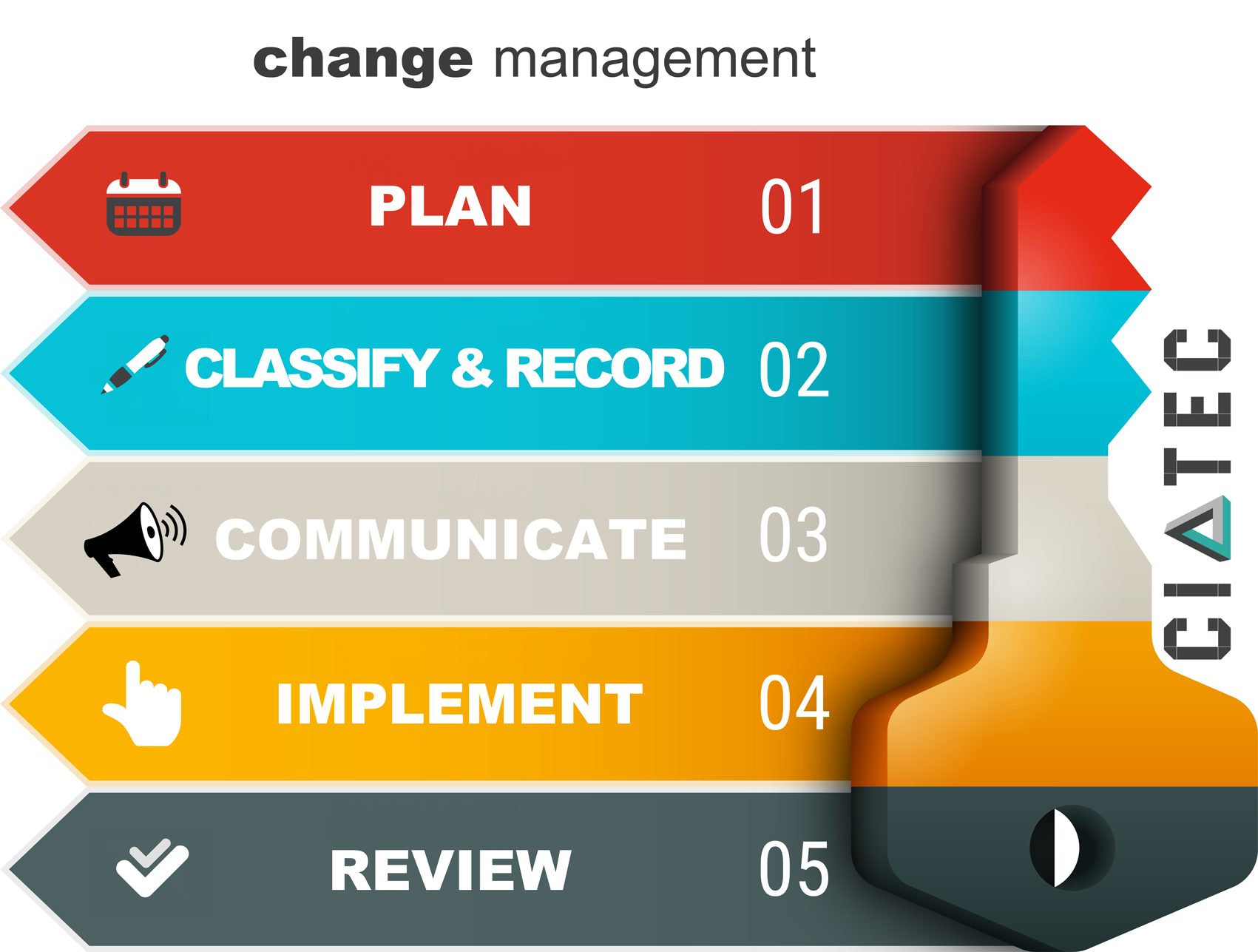5 Key Steps for a Successful Change Management in SMBs
Guide for a Successful Change in Small and Medium Environments

5 Key Steps for a Successful Change Management
A change, any change, can be very stressful, and changes in IT environment are no different. Statistics shows that more than half of the incidents in a given IT environment are caused by changes done by IT staff. A change, if not well planned and executed it can be catastrophic. Fortunately, there are many standards and frameworks out there that can be of great assistance in implementing a successful change management module in your environment.
In ITIL change control process, change management requires CAB (Change Advisory Board) to review change, plan and assist in assessment and prioritization of changes. CAB is typically formed of IT and business representatives working together to support change management team. However, in small environments, change implementer, change planner, change manager, and even CAB are often being carried by one or two people switching hats based on the role they are playing at a particular time. But this doesn’t mean that proper change management process can’t be implemented in SMB, it can and it should. Furthermore, it is almost as important as implementing it in a large and well established organization.
At CIATEC, we are always looking to help make things better within IT departments. In this article we will specify the most important steps to implement a successful change management process.

Change Management Key #1: Plan Change
This is the “blue print” of the change to be implemented. At this level you should ask yourself questions such as:
- What is the value that this change will provide?
- Do we got all the needed resources to implement the change?
- Where is this change taking us?
- How to get there?
- What is the rollback plan to be used in case of change failure?
Answer the what, where and how questions and then answer the “When” question: Set the implementation schedule, choose a proper timing and make sure it doesn’t conflict with any other scheduled jobs that might be running at the same time.
Change Management Key #2: Classify & Record Change
Keeping record of changes is a very important factor in a successful change management approach. The first question that comes to mind after any incident is: “What was changed?”. If a change log exists, it would be easy to identify the change that might have caused the issue. Keeping record starts by filling in a Request for Change (RFC) with all the change details listed below:
- Change type (Normal, Standard or Emergency are the 3 Change types according to ITIL v3)
- Change scope and detailed steps to be done
- Change Location (For environments with multiple locations)
- Rollback plan
- Severity (Critical, Important, Moderate)
- Affected components and Change Impact
- Schedule
Change Management Key #3: Communicate
At this level you should make sure that all stakeholders are notified. Especially if the change might cause a service down time.
First notify the change “approver” (usually change manager or IT manager) and get the change approved and authorized. It is worth noting that change manager usually approves minor and low-risk changes without the need of CAB. CAB is consulted for major and significant changes of high risk.
When all is set, it is important that all potentially affected users are notified, make sure they know the impact and don’t forget to mention a time frame.
Change Management Key #4: Implement Change
When all is set, and the change is approved, you can proceed with the implementation. This is the most critical part of the whole process, where the implementer puts the change management plan into action. It is crucial to keep documenting steps along the way especially if the change is being implemented in phases. Even if a rollback plan is in place, in some circumstances, change implementer might deviate from the original plan in a way that the rollback plan may not apply.
Change Management Key #5: Review Change
This is also another very important phase, it is to asses the change and check if it provided the value as planned. After all changes are done to provide better value to business!
Check, review and asses the change, make a complete health-check to make sure that there were no side effects.
Those were five key steps to execute a successful change management plan in SMB IT environment, but it actually applies for any change, not just within IT. If you have any thing to add, please do share in the comments below, or contact us here.






